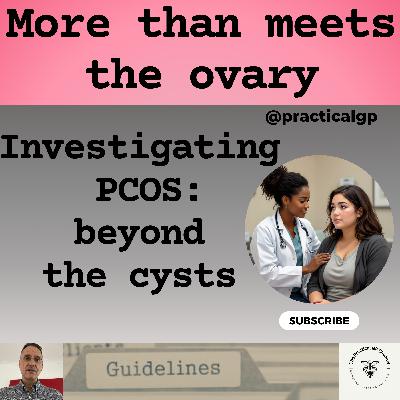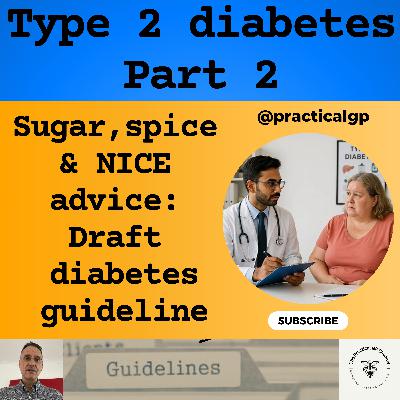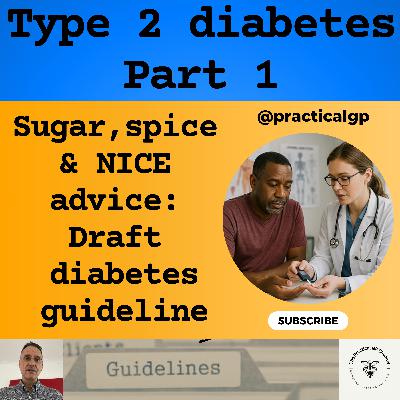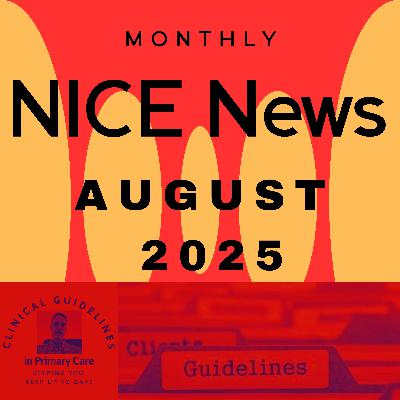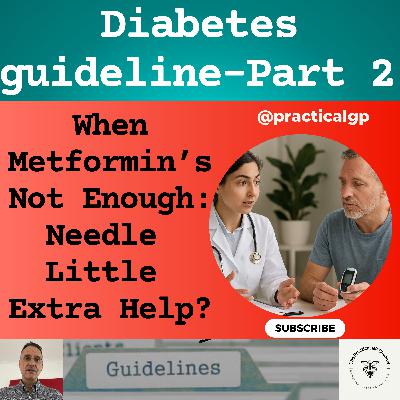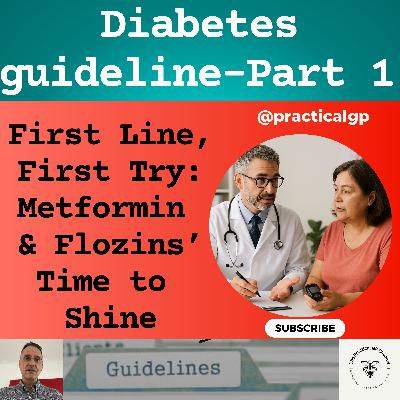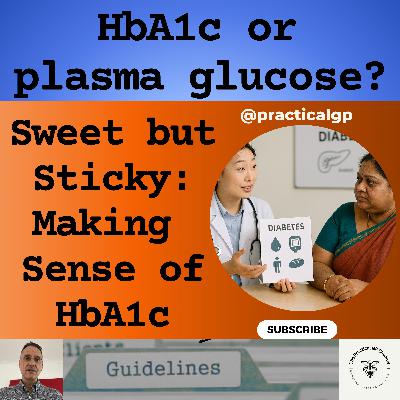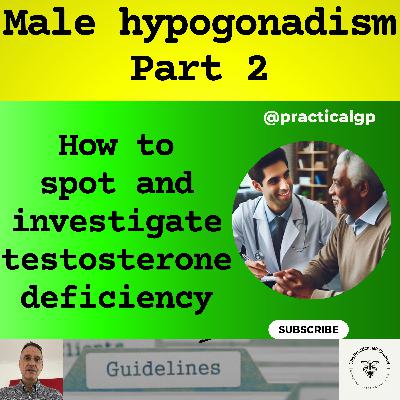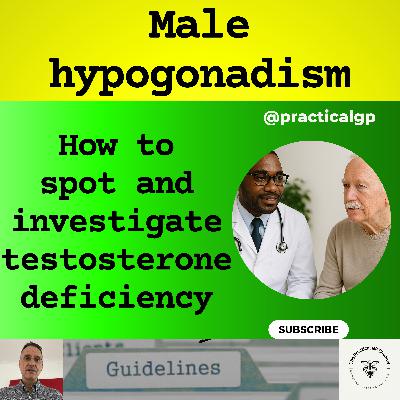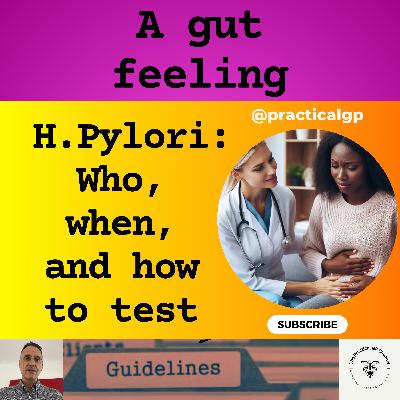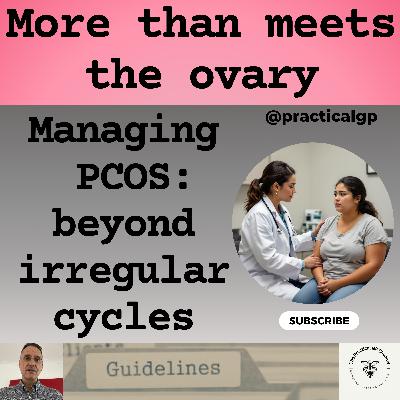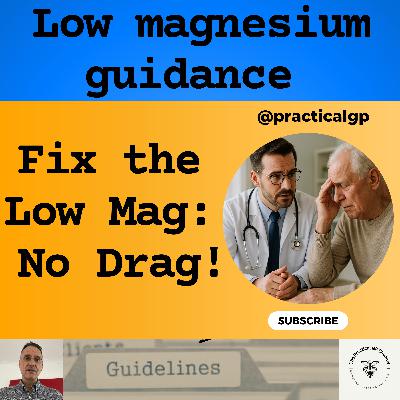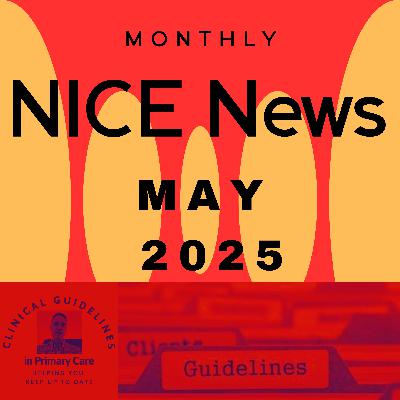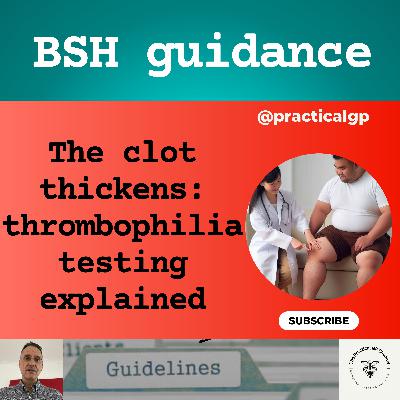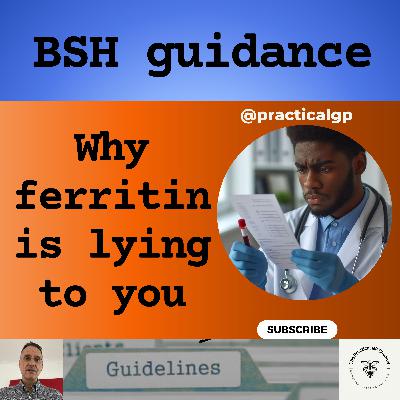Podcast - Investigating PCOS: Beyond the cysts
Description
The video version of this podcast can be found here:
· https://youtu.be/pkP0aqNGqGI
This channel may make reference to guidelines produced by a number of NHS organisations. The content on this channel reflects my professional interpretation/summary of the guidance and I am in no way affiliated with, employed by or funded/sponsored by them.
My name is Fernando Florido (also known as Juan Fernando Florido Santana), a GP in the UK. In this episode, I will go through the initial assessment and diagnosis of polycystic ovarian syndrome (PCOS), focusing on what is relevant in Primary Care only. For this advice I have looked at the published advice on the NHS Health website, North East London ICB and Health Improvement Scotland. The links to this guidance can be found below.
In the next episode, I will go through the primary care management of PCOS.
I am not giving medical advice; this video is intended for health care professionals, it is only my summary and my interpretation of the guidelines and you must use your clinical judgement.
Intro / outro music: Track: Halfway Through — Broke In Summer [Audio Library Release]
- Music provided by Audio Library Plus
- Watch: https://youtu.be/aBGk6aJM3IU
- Free Download / Stream: https://alplus.io/halfway-through
There is a podcast version of this and other videos that you can access here:
Primary Care guidelines podcast:
· Redcircle: https://redcircle.com/shows/primary-care-guidelines
· Spotify: https://open.spotify.com/show/5BmqS0Ol16oQ7Kr1WYzupK
· Apple podcasts: https://podcasts.apple.com/gb/podcast/primary-care-guidelines/id1608821148
There is a YouTube version of this and other videos that you can access here:
- The Practical GP YouTube Channel:
https://youtube.com/@practicalgp?si=ecJGF5QCuMLQ6hrk
The link to the PCOS information on the NHS Health website can be found here:
· https://www.nhs.uk/conditions/polycystic-ovary-syndrome-pcos/
The link to the PCOS guideline by Primary Care North East London ICB can be found here:
The link to the PCOS information by Right Decisions for Health and Care - Healthcare improvement Scotland can be found here:
Disclaimer:
The Video Content on this channel is for educational purposes and not intended to be a substitute for professional medical advice, diagnosis, or treatment. Always seek the advice of your physician or other qualified health provider with any questions you may have regarding a medical condition. Never disregard professional medical advice or delay in seeking it because of something you have read or seen on this YouTube channel. The statements made throughout this video are not to be used or relied on to diagnose, treat, cure or prevent health conditions.
In addition, transmission of this Content is not intended to create, and receipt by you does not constitute, a physician-patient relationship with Dr Fernando Florido, his employees, agents, independent contractors, or anyone acting on behalf of Dr Fernando Florido.
Transcript
If you are listening to this podcast on YouTube, for a better experience, switch to the video version. The link is in the top right corner of the video and in the episode description.
Hello and welcome, I am Fernando, a GP in the UK. Today, we will go through the initial assessment and diagnosis of polycystic ovarian syndrome (PCOS), focusing on what is relevant in Primary Care only. For this advice I have looked at the published advice on the NHS website, North East London ICB and Health Improvement Scotland. The links to them are in the episode description.
In the next episode, I will go through the primary care management, so stay tuned for that.
Right, let’s jump into it.
Polycystic Ovary Syndrome is a common endocrine disorder affecting approximately 6 to 10 percent of the female population in the UK. It is a heterogeneous condition, presenting with a spectrum of clinical features and long-term health implications.
The main clinical features are:
· Hyperandrogenism (including hirsutism, acne, and male-pattern hair loss)
· Menstrual irregularity with associated anovulatory infertility.
· overweight in 40-50% of cases and
· Insulin resistance in 10-15% of slim and 20-40% of obese women but all women with PCOS are at an increased risk of developing type 2 diabetes.
What causes polycystic ovary syndrome (PCOS)?
The exact cause of PCOS is unknown, but it often runs in families.
We know that it's related to abnormal hormone levels in the body, including high levels of insulin secondary to insulin resistance and an increased production and activity of hormones like testosterone.
But what is the exact pathophysiology of PCOS?
Well, it’s a complex condition with several interconnected mechanisms.
First, there’s disruption in the hypothalamic-pituitary-ovarian axis. The brain increases the frequency of gonadotropin pulses, which leads to more stimulation of LH than FSH. This imbalance, often with a higher LH to FSH ratio, stimulates the ovaries’ theca cells to produce excess androgens. These androgens are responsible for many of the clinical features, like hirsutism, acne, and male-pattern hair loss.
Low FSH also means the follicles in the ovary don’t develop properly. They tend to grow to around six or seven millimetres, but they don’t ovulate. These small, underdeveloped follicles build up around the edge of the ovaries, creating a classic appearance on ultrasound.
To make matters worse, those high androgen levels further disrupt follicle development, reinforcing the cycle of anovulation. And when ovulation doesn’t happen, periods become irregular or stop altogether, which increases the risk of endometrial hyperplasia due to unopposed oestrogen.
Another major part of the pathophysiology is insulin resistance. Many women with PCOS, even those who aren’t overweight, have insulin resistance. The exact reason isn’t fully understood, but it’s thought to involve a defect in insulin signalling inside muscle and fat cells.
This hyperinsulinemia together with LH stimulate even more androgen production by the ovaries and it also lowers the liver’s production of sex hormone-binding globulin, which raises the amount of free testosterone.
And to add to all this, those excess androgens go on to worsen insulin resistance at the tissue level, creating a vicious cycle of more insulin, more androgens, more resistance, and more insulin again.
How is it diagnosed?
PCOS can be diagnosed when two out of the following three Rotterdam criteria are met. These are:
- Oligo- or anovulation.
- Clinical or biochemical signs of hyperandrogenism and
- Polycystic ovarian morphology on ultrasound.
But this is always after excluding other causes such as thyroid dysfunction, Cushing’s syndrome, hyperprolactinaemia, late-onset congenital adrenal hyperplasia, and androgen-secreting tumours.
There is no consensus on the criteria needed to diagnose PCOS in adolescents. This is because diagnosing PCOS in adolescents is harder as the diagnostic features used in adults e.g. oligomenorrhoea, acne and PCO morphology on USS can be normal pubertal physiological events that are transient. We should not diagnose it in under 18 unless both clinical hyperandrogenism and irregular cycles persist for more than two years post-menarche. Some like the American Academy of Family Physicians argue that, for this age group, all three Rotterdam criteria be met before the diagnosis is made.
As we can see, the clinical features of PCOS are varied. So let’s have a look at some definitions in the Rotterdam criteria:
Firstly, we have oligo or anovulation. Oligomenorrhea is defined as cycles more than 35 days apart but less than 6 months apart and amenorrhea as the absence of menstruation for 6 to 12 months after a previously established cyc

